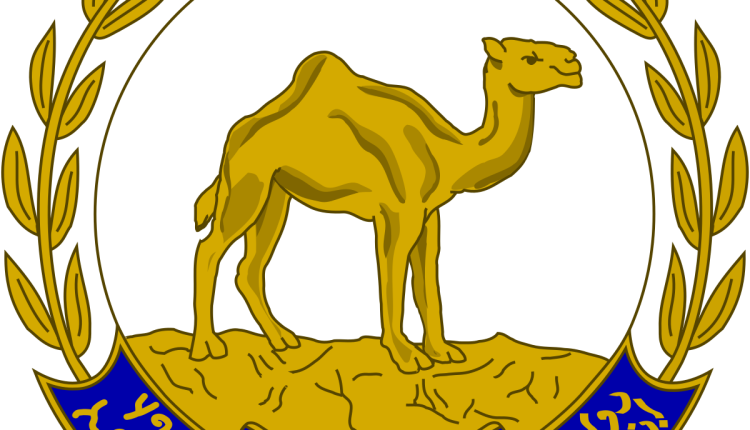In Eritrea, April ushers in a transition period marked by the arrival of “Azmera,” the nascent quasi-season that signals the end of the Great Fast. For rural communities deeply intertwined with agriculture, this month is eagerly anticipated. Azmera’s gentle rainfall provides the vital moisture needed to sow seeds, preparing the land for the heavier summer rains.
Meanwhile, in urban centers, residents weary of the dry winter sun yearn for Azmera’s temperate breezes brought by the sporadic showers. This anticipation is heightened by the approach of Easter, the culmination of the lengthy spiritual observance of Great Lent.
The Great Lent, known traditionally as “Tsom Arba’a,” is one of Christianity’s most significant and protracted fasting periods. This season is a time of profound introspection and spiritual discipline in Eritrea. Nearly half the nation engages in this period of sobriety, supplication, and self-examination.
Religion, a cornerstone of cultural heritage, shapes the very fabric of society. It serves as a vital instrument in fostering social harmony and balancing diversity. During the fifty-five days of the Great Lent, Christian adherents are guided by righteous conduct, emphasizing moral growth, self-improvement, and goodwill. The harmonious coexistence of citizens during “Tsom Arba’a” is palpable. The sight of believers spending their days fasting and praying and their evenings sharing meals with neighbors and friends—including those of different faiths—is a testament to this unity. This practice transcends religious ritual, a powerful tool for building cohesion across religious and ethnic diversities.
Beyond its spiritual and social significance, the Great Lent offers a unique culinary experience. While it doesn’t necessitate complete abstinence from food throughout the day, Lenten meals, typically consumed in the afternoon, require strict avoidance of meat, dairy, fish, and eggs. The traditional dishes prepared during this period are visually appealing, flavorful, highly nutritious, and low in fat. For nearly two months, those observing the fast abstain from these prohibited foods.
This year, Lent began in February, with Easter Sunday, or Resurrection Sunday, falling on April 20th. The preceding months saw believers dedicating themselves to fasting, personal and communal prayer, confession, self-reflection, and mutual support. Sunday, April 13th, a national holiday, commemorated Hosanna Palm Sunday, marking Christ’s entry into Jerusalem. Churches distributed palm branches, which were intricately woven into crucifixes, decorative rings, and other ornaments. Crafting these palm leaves, particularly the pyramid-shaped rings known as “Shbo” in Tigrinya, has become an integral part of Eritrean culture. Though rooted in spiritual practice, these rings are often worn for their aesthetic appeal, even by non-Christians, as a unique annual tradition.
Passion Week, or Holy Week, known locally as “Hmamat,” represents the final, most intense week of Lent before Easter. This period is characterized by deepened spiritual engagement, with believers devoting more time to religious practices. Meals are prepared later in the day, and stricter observances are followed, including abstaining from handshaking, clapping, and secular music. The palpable sense of harmony during this time is mainly due to non-Christians’ respect for the believers’ observances.
Maundy Thursday, or “Hamus Tsgbo,” features the traditional preparation of “Ttqo,” a high protein cereal dish. The custom of mothers cooking “Ttqo” outdoors and sharing it with neighbors and passersby, regardless of their faith, is a poignant expression of community spirit.
The culmination of the Great Lent and Passion Week is Good Friday, or “Arbi Sqlet,” which commemorates the crucifixion of Jesus Christ. This day of mourning and reflection sees schools, workplaces, and some public services closed. Many believers spend the day in churches. At 6 PM, families and neighbors gather for a meal, breaking an eighteen-hour fast. Holy Saturday is marked by congregants dressed in white, attending church services until midnight. After midnight, they return home to break the Lenten fast with a feast, often featuring traditional porridge, “Ge’at.” Many, particularly in Asmara, eagerly anticipate the return of milk-based drinks like macchiato or savory dishes like “Zgni” and omelets.
This year, the overlapping of the Christian Lent (February 24th – April 20th) and the Muslim Ramadan (March 1st – 30th) highlighted the shared values of self-reflection and unity across religious boundaries. While expressed differently, fasting in both religions embodies a strong value system that promotes self-reflection and fosters a robust sense of unity within diversity. Eritrean culture’s deep respect for both religions is evident in the annual observance of these cultural and religious rituals, serving as a constant reminder of the solidarity and coherence that underpins the nation.
Distributed by APO Group on behalf of Ministry of Information, Eritrea.


